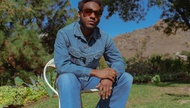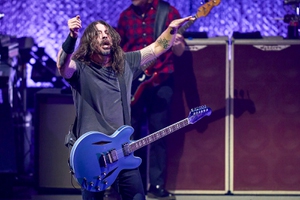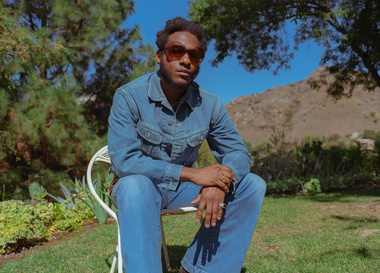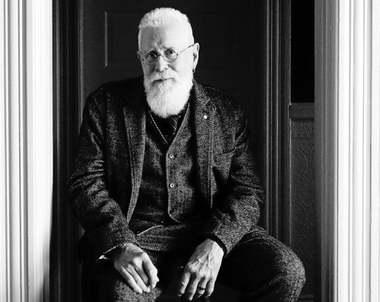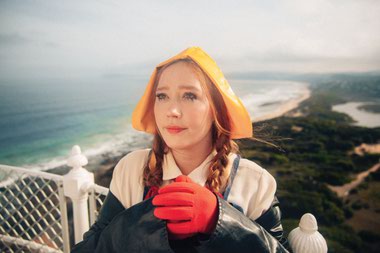Living Colour has a long-running history of being able to generate intrigue, not only with their music, but sometimes just with a single word. It’s been more than 25 years since the New York-bred rock group caused the world’s ears to perk up with the release of their 1988 landmark debut Vivid, an album full of hard-edged funky grooves and future hits like “Cult of Personality” and “Glamour Boys.”
Vivid opened lots of doors for the band, and eventually it wound up opening for The Rolling Stones on 1989’s Steel Wheels tour as the album found its way inside Billboard’s top 10 of with double platinum sales. The band had arrived, but it certainly didn’t happen overnight. The Living Colour machine had been carefully crafted over a four-year span by founding guitarist Vernon Reid, who put the initial version of the group together in 1984. Three decades later, Reid and the members of the band still work at their own pace to deliver music that will be worth the wait.
With a new album just around the corner, the band is back out on the road for a lengthy set of dates, including a Las Vegas stop at Hard Rock Live on October 6. We spoke with Reid by phone during a recent layover in Detroit to find out what to expect.
What sort of memories do you have of being in Vegas over the years? One of the greatest memories for me was years ago when I saw Billy Cobham’s band and he had a lineup of great musicians performing. One of the musicians in that lineup was Randy Jackson, who went on to become famous for being the judge of American Idol.
Living Colour has a new album in the works. As I understand it, there will be some material from that in the setlist for the Vegas show. Yeah, we’ll play a couple of things, and the record is probably going to come out early next year. You know, records can take longer than planned, but we’re really pleased with where things are at.
How long has this one been in the works? It’s been in the works for a couple of years. Because we’ve been playing in between, people have other projects and things that they’re doing, from producing to playing with other people in other situations. But it’s coming together.
Is it done at this point? Pretty much. We’re in the mixing stages.
The album is called Shade, right? Where did that title come from? Well, shade refers to color, it refers to attitude and a shade is relief and shade is also stress. You know, it’s a fascinating term. Shade also refers to race, so it has a lot of utility in one very compact expression. Part of what’s inspired the record is a certain amount of looking at the blues, but the record is not a blues-rock record. In fact, one of the songs that’s a part of it is a cover of Biggie Smalls’ song “Who Shot Ya,” so interestingly enough there’s also an urban tone that kind of crept into the record. It’s a very interesting split.
What sent you in that direction? You know, we were invited to play at the centenary of Robert Johnson at the Apollo, with artists like Taj Mahal and Questlove. We played a version of “Preacher Blues,” and it just felt like we connected with something. We didn’t play it traditionally; we played it with a heavier kind of expression, and it worked well. So we said, well, maybe there’s something in there.
I don’t think anybody would ever expect Living Colour to put out a standard record that’s just by the numbers. Yeah, it’s really not. All of our records, I think, are semi-autobiographical in a way. They also touch on existential concerns. … I can’t speak to how that’s going to translate to other people, but one thing that I will say is that Living Colour is very much a band that we live what we’re talking about. That’s through good and ill, we live where we are. Where we are becomes embedded in what we’re doing.
It’s pretty unbelievable to think that you’re now 30 years removed from when you founded this band. As a player, what do you feel like you’re still working on? Clarity. You know, I’m still very much learning how to play the guitar. One of the things is to not be pulled by trends. It bothers me, like, the whole construct of the next Hendrix or the next thing. Hendrix lost his mom, and his parents were not together when his mom died. So when you hear “The Wind Cries Mary,” that’s what you’re hearing. Because he was a paratrooper, when he did “Machine Gun,” he translated all of what that is—the terror, the fear and the randomness of what it is to be a soldier—into that second-set version of “Machine Gun” on New Year’s Eve in 1970 with the Band of Gypsies.
He extended a challenge to all of us to interject our lives, so the challenge is to really bring forward who I am. Because you could be very popular, or you can not be popular, but bringing your life into it, that’s something that no one can take away from you. My parents are Carribbean, and I was not raised in the Caribbean. I was born in London, but I didn’t grow up in the U.K. I was raised in Brooklyn. So one of the things that’s the source of my blues, if you will, is that on one level, I’m not from the South. You know, Hendrix wasn’t from the South, and I think he got a lot of crap for it, when he was in the chitlin circuit playing with R&B bands, they were like, “Where are you from?” And that’s exactly what makes his thing so electrifying.
You’re challenging other people. That’s what made Hendrix real, and that’s what makes Living Colour real. You both fought for it. Absolutely. That’s what everyone needs to know. Whatever their dreams are, you have to fight for your unlikely dream. Living Colour was not supposed to happen at all—at all.
I’m so moved and touched when people in all kinds of situations say, “What you did meant something.” I talk to people in dark metal bands; I talk to people that play jazz. I’ve talked to hip-hop people, and I’ve talked to comedians that have said, “What you did meant something.” At the end of the day, that’s what it’s about.
Living Colour October 6, 8 p.m., $24-$28. Hard Rock Live, 702-733-733-7625.

